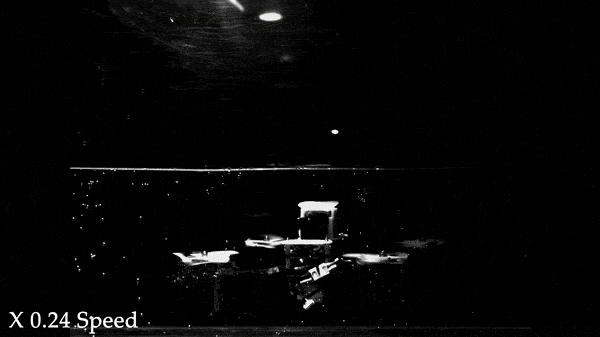If you’ve ever piloted a drone close to a lake’s waterline, then you remember how nervous you must have been. You may be able to fish the drone out if it gets submerged, but most of its electronics will probably have to be replaced. However, these concerns don’t apply to this new drone devised at Beihang University, which is at home both swimming under water and flying in the air. Additionally, drawing inspiration from nature, the drone has a built-in suction cup that allows the robot to attach itself to almost any kind of surface, and maybe hitch a ride on moving objects to conserve precious power.

The completely waterproof quadcopter can easily maneuver in and out of the water like a breeze, being capable of transitioning into and out of the two mediums up to 20 times a minute.
According to Li Wen, a mechanical engineer at Beihang University and the lead author of the new study, the drone’s amphibious capabilities were inspired by the kingfisher, a very agile bird that dives from the air, which has low resistance, into high-resistance water to catch prey. The bird dives into the water without making a splash by diving beak first and folding its wings as it breaks the water’s surface. Similarly, the drone’s rotor blades quickly fold and unfold, as well as rotate at different speeds, depending on whether it’s in the water or air.
But it wasn’t just the kingfisher that Wen had his eyes on. The drone’s design is also heavily inspired by the remora fish, also known as the suckerfish. These ray-finned fish are the ultimate hitchhikers of the sea, using a modified fin on their heads that acts as a suction pad to stick themselves to other fish that can be up to 20 times larger than themselves. Their suction pads are so powerful that remoras can stay attached to sharks and even dolphins when they’re leaping out of the ocean.
Previously, Wen and colleagues examined the tissue on the soft lip of the remora’s suction pad, finding a layer of vertically aligned collagen fibers just beneath the skin that provides elasticity to maximize contact with other fish. These fibers are arranged in ridges aligned in columns and rows that extend during muscle contraction to create smaller compartments of suction, further tightening the grip of the fish on its host.
Armed with this knowledge, the Beihang University researchers made an artificial replica of the remora fish suction pad, which mimics the rubbery segmented layout that can create a tight seal around a variety of surfaces, be they wet, dry, smooth, or rough. The segments are changed hydraulically, whereas the fish uses muscle contractions, but the end effect is the same in both cases.
And like the remora, the suction disc was installed on the ‘head’ of the submersible drone, right atop. The idea is to use this suction head to attach itself to a moving object, either underwater or in the air, to save power. While attached to a submersible robot, the drone uses only 5% of the power it usually needs for its own propulsion. When it’s attached to moving objects in the air, the drone uses only 2% of its power.
For now, however, this drone can only operate in shallow waters, at a maximum depth of 2.2 (7.2 feet). Any deeper and the drone will lose communication with the controller outside the water, whose radio signals work poorly underwater. The range could be heavily improved though if underwater signals are sent via acoustic waves.
While we’ll likely never see this drone catching rides on sharks, whales, and dolphins, its most immediate applications are in research expeditions and wildlife surveys, especially in remote environments.
The findings appeared in the journal Science Robotics.


